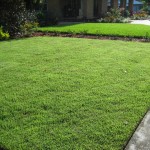 Any homeowner with a lawn can attest that in order to have a lush green lawn they need to water it and apply fertilizer. Between finding the appropriate fertilizer strength, to buying the tools to properly spread it so the grass doesn’t burn, to applying ridiculous amounts of water to break down the granules so that maybe some day the grass will be lush. Or paying a lawn fertilizer application company like TruGreen to fertilize your lawn for you at a minimum of $30/application.
Any homeowner with a lawn can attest that in order to have a lush green lawn they need to water it and apply fertilizer. Between finding the appropriate fertilizer strength, to buying the tools to properly spread it so the grass doesn’t burn, to applying ridiculous amounts of water to break down the granules so that maybe some day the grass will be lush. Or paying a lawn fertilizer application company like TruGreen to fertilize your lawn for you at a minimum of $30/application.
This is easy – people don’t want their green lawns to go brown.
Did you know that Recycled Water already has some of the same elements in found in fertilizer and when applied to lawns they start working immediately?
Whats the Best Fertilizer For Your Lawn? Recycled Water. Water soluble nitrogen, phosphorous and potassium ready to work now with no extra watering required. Read on for details as to why.
Anyone can do the necessary research to determine how much fertilizer is required for their lawn, but spending the time and wrapping your head around the topic can be difficult. This post is meant to alleviate those problems and break things down into a usable format.
Lets start with FACTS
Based upon the information available at http://www.greenviewfertilizer.com/articles/fertilizer-facts, scientists recommend applying Nitrogen fertilizer in spring and fall with application rates at 2.5 to 3.5 lbs per 1,000 sq ft of grass per year.
| Spring | 0.5 – 1.0 pound Nitrogen fertilizer |
| Summer | No Fertilizer |
| Fall | 1.5 – 2.5 pounds Nitrogen fertilizer |
| Winter | No Fertilizer |
Fertilizer should be applied twice a year, once in spring to “build up reserves for summer” and once in fall “to help develop strong root system”. Application in summer can be applied if your grass thrives in summer and doesn’t go dormant. Fall/Winter application can be utilized with a “winterizer” type of fertilizer.
What do all those number mean?
When looking at a bag of fertilizer – there are three sets of numbers or the Periodic Table of Elements letter’s followed by numbers.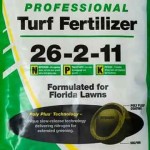
First number – Nitrogen – helps promote overall grass shoot growth – Symbol N
Second number – Phosphorus (Phosphate) – helps promote strong root growth – Symbol P
Third number – Potassium (Potash) – helps grass withstand stress – like from drought or disease – Symbol K
There are many different number combinations that you can see on bags, the one pictured at the right is 26 – 2 – 11. Sometimes they’re labeled N-P-K – which refers to the chart above. What does this mean?
Recycled Water has all these elements and more.
Based upon the total weight of the bag, 26% of the content is nitrogen (N), 2% of the content is Phosphorus(P) and 11% of the content is Potassium(K). If the bag were a 50lbs bag we would need to do some math to determine how much Nitrogen, Phosphorus and Potassium we would get from the bag.
Nitrogen
50 lbs x 26% = 13 lbs
Phosphorus
50 lbs x 2% = 1 lb
Potassium
50 lbs x 11% = 5.5 lbs
So given that we need to apply this bag based upon the idea that 1,000 sq ft of lawn needs 0.5 – 1.0 pounds of nitrogen fertilizer in the spring and 1.5 – 2.5 pounds in the fall, this bag will provide A LOT of fertilizer. It all depends on how much surface area the bag says it will cover.
Lets say this 50 pound bag will cover 10,000 sq ft, then divide all of our numbers by 10 to determine the pounds per 1,000 sq ft. (10,000 sq ft / 1,000 sq ft = 10)
Nitrogen
13lbs / 10 = 1.3 lbs
Phosphorus
1lbs / 10 = 0.1lbs
Potassium
5.5lbs / 10 = 0.55lbs
A little more Nitrogen is available than is required in spring and a little less than is required in fall is available per dose from the bag. It is up to you to decide how you want to split this apart. Based upon these numbers, use how ever many parts of the bag you need to cover your lawn.
Application
To apply fertilizer – grab a spreader – its a tool that you load the bag of fertilizer into and then walk your lawn to spread the fertilizer. Be sure to spread evenly so that no one area gets extra.
Watering
Run your sprinklers as you normally would – enough to gain 1″ water coverage over the entire lawn. Hopefully after a few weeks the water will break down the granules to make it water soluble so that the grass will absorb it. Lots of waiting here.
This would be a good time to watch how your sprinklers work on your lawn and to provide you with insight into how long it takes for your sprinklers to run until the ground can’t absorb anymore the water and it runs-off onto the side walk and street. If this is the case, it would be best to stop the sprinklers and let the ground absorb the water, then run the sprinklers for a second cycle about an hour later – or however much is needed to obtain the 1″ water coverage.
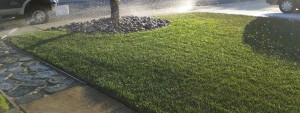 This is where RecycledH2O comes into the play
This is where RecycledH2O comes into the play
Recycled Water contains some of the same elements as your basic lawn fertilizer.
The advantage with Recycled Water is the elements are in a water soluble format so the uptake is instant, no time spent breaking down the elements for uptake into the plants roots.
Using the chart provided by Dublin San Ramon Services District and available on this blog we can find out that RecycledH2O contains 33.3 mg/L of Nitrogen (as Ammonia) [we disregard Nitrogen as Nitrite] and 17.6 mg/L of Potassium.
I work in the Waste Water Treatment field – I know from experience that Phosphorus content is usually between 0.8 and 1.2 mg/L.
How do we convert mg/L to lbs/gallon?
There is a formula in the Waste Water field called the “Pounds Formula”.
Pounds, lbs = (Concentration, mg/L) x (Flow, MGD) x (8.34 lbs/gallon)
Lets take the first element in a bag of fertilizer – Nitrogen.
(33.3 mg/L x 8.34 lbs/gallon) / 1,000,000 gallons = 0.000277722 lbs/gallon
The second element in a bag of fertilizer – Phosphorus.
(1.2 mg/L x 8.34 lbs/gallon) / 1,000,000 gallons = 0.000010008 lbs/gallon
The third element in a bag of fertilizer – Potassium.
(17.6 mg/L x 8.34 lbs/gallon) / 1,000,000 gallons = 0.000146784 lbs/gallon
In each gallon of Recycled Water there is a very small amount of the same elements that we find in fertilizer. But how do we compare this to what we get out of a bag of fertilizer? Lets put our units into a common format – such as how much water is needed to cover 1,000 sq ft grass.
How much water do I need to water my lawn?
For every 1,000 sq ft of lawn, it needs 623 gallons of water to provide 1″ coverage.
1000 sq ft lawn x 7.48 gallons/foot x 1"/12" coverage = 623 gallons
623 gallons!
Holy moly – that is a lot of water! No kidding.
Now imagine that you water your lawn twice a week and you have 2,000 sq ft lawn. You could be using upwards of 2,400 gallons a week, 9,600 gallons a month or 320 gallons a day. I know – you had no idea.
The Math Continues
If 1,000 sq ft of lawn requires 623 gallons – then lets apply that to the lbs of Nitrogen, Phosphorus and Potassium.
How many pounds of Nitrogen is available in Recycled Water that will cover 1,000 sq ft of grass with 1″ coverage?
0.000277722 lbs/gallon x 623 gallons = 0.173020806 lbs
How many pounds of Phosphorus is available in Recycled Water that will cover 1,000 sq ft of grass with 1″ coverage?
0.000010008 lbs/gallon x 623 gallons = 0.006234984 lbs
How many pounds of Potassium is available in Recycled Water that will cover 1,000 sq ft of grass with 1″ coverage?
0.000146784 lbs/gallon x 623 gallons = 0.09144 lbs
If 0.5 lbs to 1.0 lbs of Nitrogen is required for Spring fertilization then lets calculate how much water is needed to meet this requirement.
0.5 lbs Nitrogen
0.5 lbs / 0.173020806 lbs = 2.889 waterings or 623 gallons x 2.889 = 1800 gallons
To
1.0 lbs Nitrogen
1.0 lbs / 0.173020806 lbs = 5.7796 waterings or 623 gallons x 5.7796 = 3600 gallons
Winter fertilization requires 1.5 lbs to 2.5 lbs Nitrogen which equates out to:
1.5 lbs = 1.0 lbs + 0.5 lbs = 1,800 gallons + 3,600 gallons = 5,400 gallons
to
2.5 lbs = 1.5 lbs + 1.0 lbs = 5,400 gallons + 3,600 gallons = 9,000 gallons
The same math can be performed to find out the pounds of Phosphorus and Potassium – numbers which a generally not scrutinized so closely as the Nitrogen content of fertilizer.
How many trips to the fill station with a 300 gallon tote will be required to meet the spring time and winter time requirement?
Spring: 3,600 gallons / 300 gallon tote = 12 trips
Winter: 9,000 gallons / 300 gallon tote = 30 trips
Now if we assume you’re transporting Recycled Water for your yard, then every time you water you grass or plants you’re providing a constant supply of fertilizer and you will notice a difference from the very first trip.

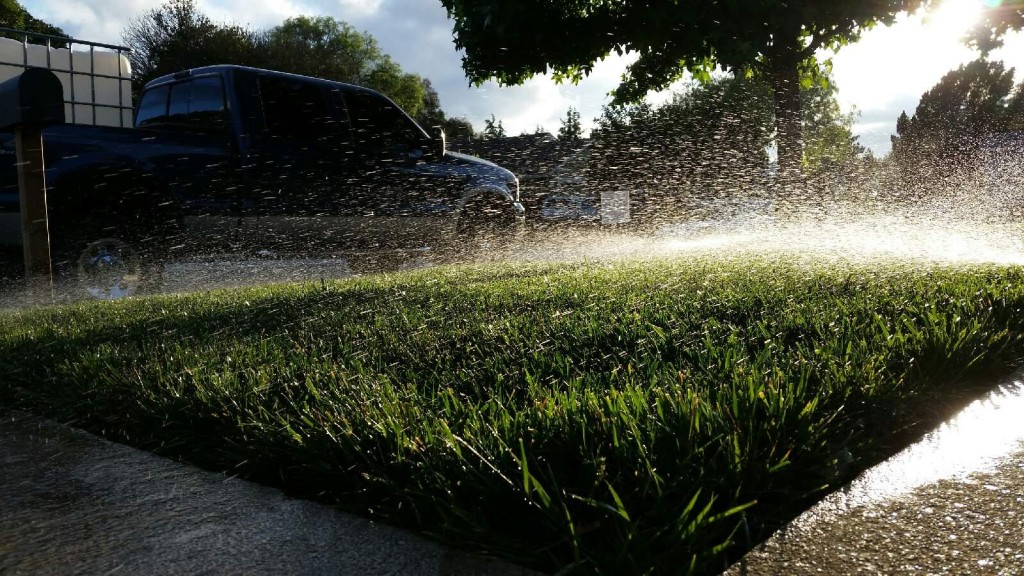
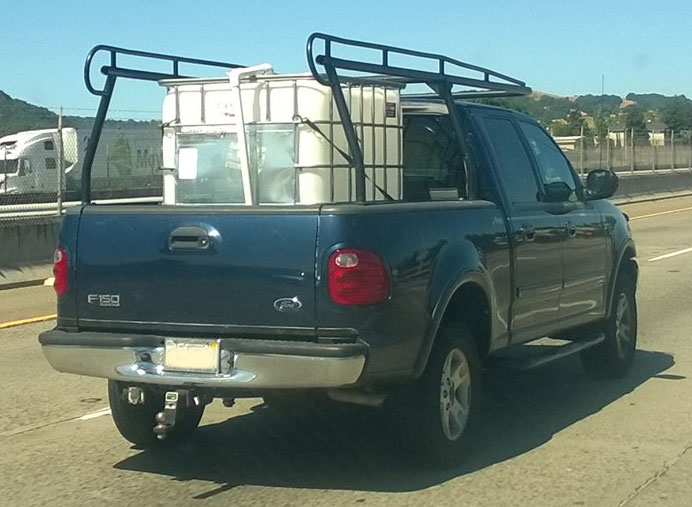
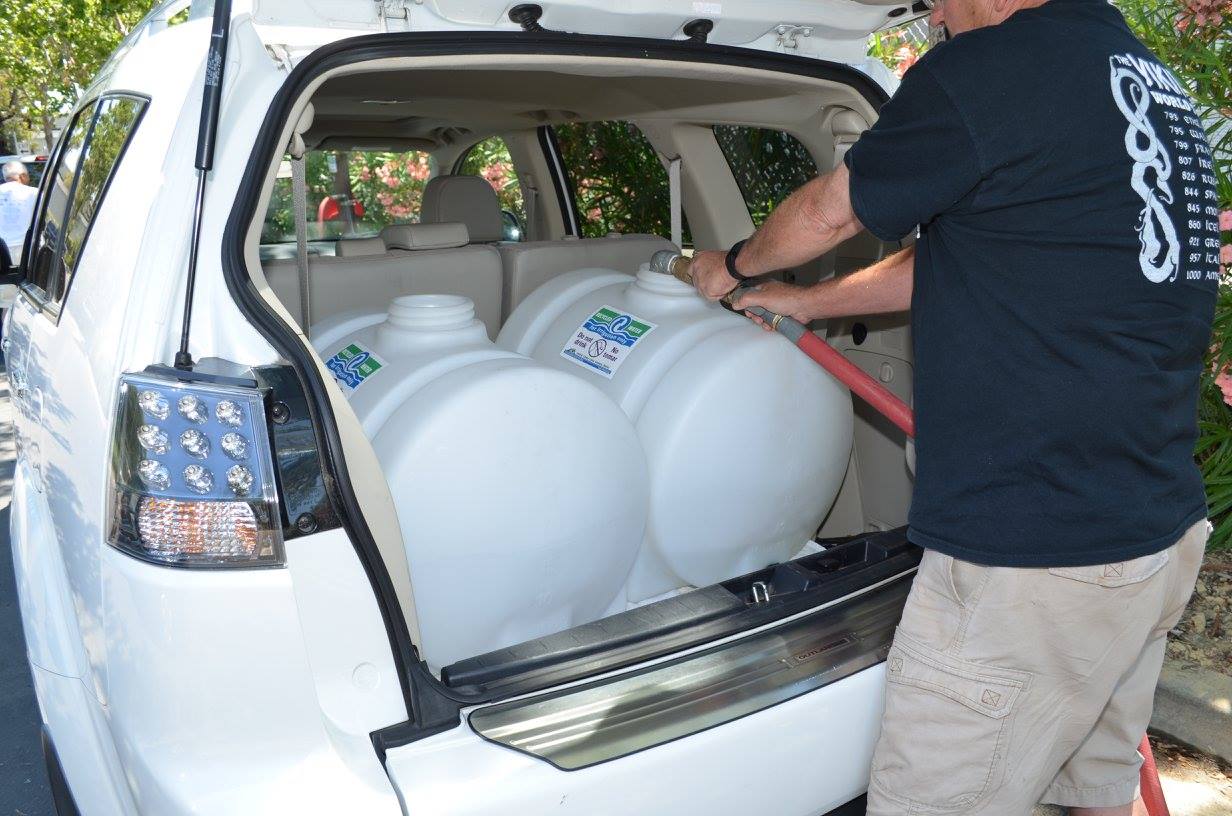
Leave a Reply